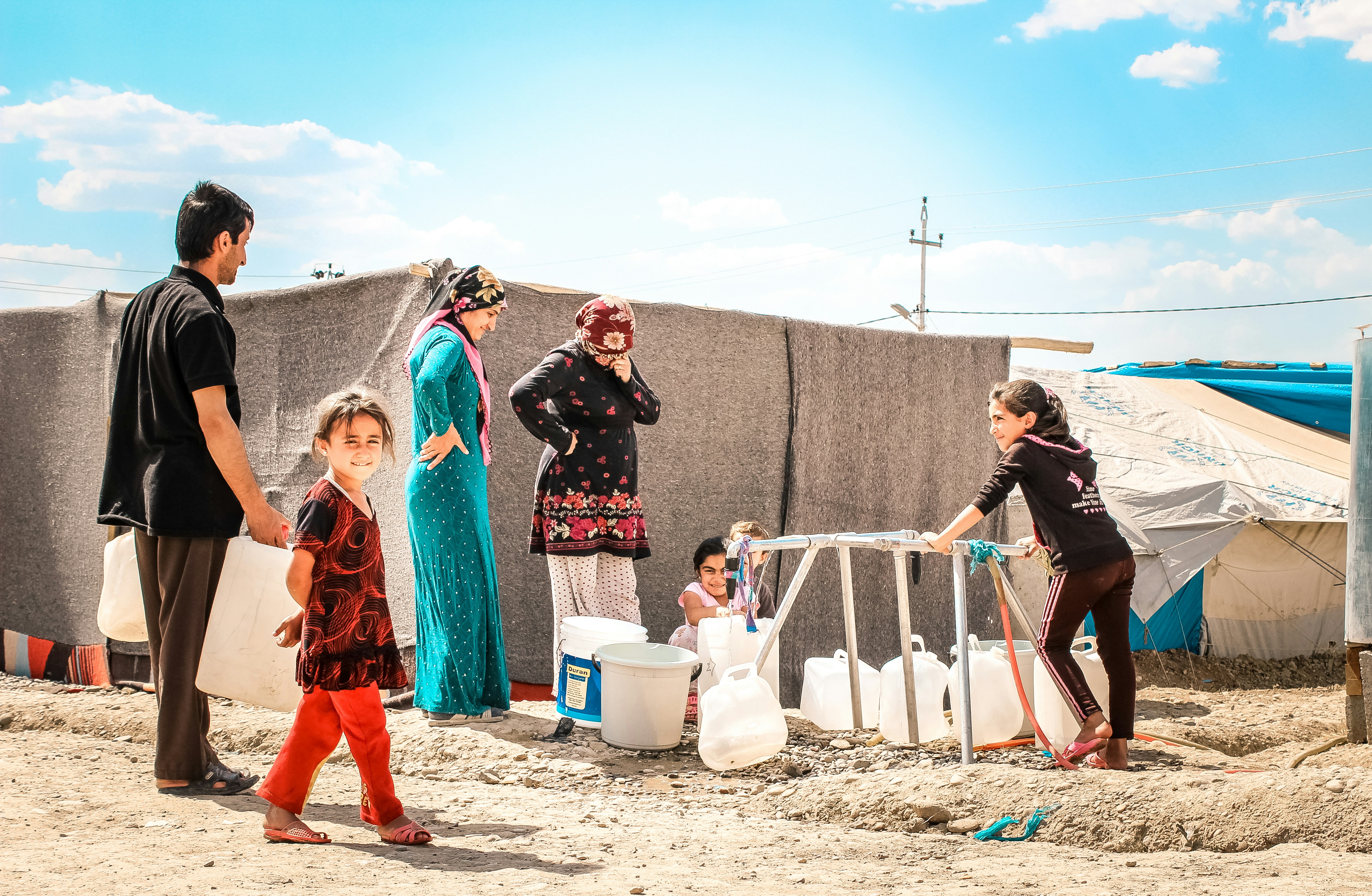Overview of the Recent Salmonella Outbreak Linked to Cucumbers

Photo by MANMOHAN PANDEY on Unsplash
Introduction to the Outbreak
In recent months, a significant outbreak of Salmonella has been reported across various states in the United States, raising serious concerns regarding food safety and public health. This alarming incident has reportedly affected over 500 individuals, with symptoms ranging from gastrointestinal distress to severe dehydration, highlighting the risks associated with contaminated food sources. The outbreak has been traced back to cucumbers, which are a popular and widely consumed vegetable, thus increasing the urgency for thorough investigation and preventive measures.
The Centers for Disease Control and Prevention (CDC) has been closely monitoring the situation, collaborating with state health departments to gather data on the affected individuals and geographical distribution of the cases. Reports indicate that outbreaks have occurred in multiple states, including but not limited to California, Texas, and New York, signaling a widespread issue that transcends regional boundaries. The CDC has emphasized the importance of awareness regarding foodborne illnesses and the need for consumer vigilance when selecting and consuming fresh produce.
This outbreak underscores the broader implications of food safety in relation to public health. Salmonella, a common cause of foodborne illness, can lead to serious health complications, particularly among vulnerable populations such as children, the elderly, and individuals with compromised immune systems. As the investigation unfolds, public health officials continue to encourage consumers to practice safe food handling techniques and to seek medical attention if they suspect they have contracted Salmonella. Awareness and education will be essential in reducing the risk of such outbreaks occurring in the future, as they emphasize the importance of food safety on a national level.
Health Implications of Salmonella Infection
Salmonella infection poses significant health risks, leading to a range of symptoms that can manifest shortly after exposure to contaminated food, such as cucumbers. Typically, individuals experience gastrointestinal symptoms, which can include diarrhea, abdominal cramps, fever, nausea, and vomiting. These symptoms generally appear six hours to six days post-infection and can last from four to seven days, although this timeframe may vary based on individual health and infection severity.
While many people recover without requiring medical treatment, it is essential to recognize that some cases can escalate to severe illness. Vulnerable populations, such as the elderly, young children, pregnant women, and individuals with weakened immune systems or chronic health conditions, are particularly at risk for more severe symptoms and complications. In these cases, the Salmonella bacteria can infiltrate the bloodstream, leading to more serious health concerns such as septicemia or reactive arthritis. Symptoms in more severe cases might include high fever, severe abdominal pain, and persistent vomiting, necessitating medical attention.
It is crucial to understand the potential health implications associated with Salmonella infections. Individuals in high-risk categories must be vigilant, as they may require hospitalization for more aggressive treatment, including intravenous fluids and antibiotics. Overall, while most healthy adults can expect to recover from salmonella with proper hydration and rest, awareness of the symptoms can aid in early detection and treatment, mitigating the risk of severe health consequences. Proper food handling and hygiene practices remain the best preventive measures against Salmonella infection, especially during outbreaks linked to specific foods, such as cucumbers.
Timeline of the Outbreak
The recent Salmonella outbreak linked to cucumbers marks a significant public health event, prompting health authorities to spring into action. The timeline of this outbreak began in late June 2023, when the Centers for Disease Control and Prevention (CDC) received initial reports of gastrointestinal illnesses among individuals who consumed cucumbers. Analysis of these early reports indicated a pattern that raised alarms, leading the CDC to initiate an investigation.
By early July, the CDC, in collaboration with state health departments, conducted a thorough examination of the cases associated with the suspect food item. They published an official health advisory recommending that consumers refrain from eating cucumbers from identified suppliers. This advisory was critical in halting further exposure, with many retailers voluntarily removing the implicated products from shelves.
As the investigation progressed, laboratory tests confirmed that several cucumber samples were contaminated with Salmonella, a bacterium responsible for causing severe gastrointestinal distress. Health officials expedited tracing efforts to identify the source of the contaminated cucumbers. By mid-July, a specific farm and distribution center were pinpointed, which helped narrow down the batches of cucumbers linked to the outbreak.
Throughout July and early August, health authorities continued to monitor reported cases closely, identifying a total of 150 confirmed illnesses across multiple states. Responding to the situation, public health campaigns were launched to educate consumers about food safety and the importance of proper washing techniques for fresh produce.
In late August, after extensive investigations and collaborative efforts between various health agencies, the affected batches were officially recalled, marking a significant step towards controlling the outbreak. Regular updates from the CDC helped keep the public informed about ongoing developments. By the end of September, the number of reported cases began to stabilize, indicating that interventions had effectively minimized further spread of the Salmonella outbreak linked to cucumbers.
Investigative Measures Taken
The recent Salmonella outbreak linked to cucumbers has prompted a comprehensive investigation aimed at identifying the source of the contamination and preventing further cases. Health officials have employed a meticulous trace-back process that tracks the distribution of the contaminated cucumbers from the point of sale back to their source. This often involves analyzing records from various suppliers, retailers, and distributors to establish a timeline of where and how the contaminated products entered the market.
Interagency cooperation is pivotal in these investigations, particularly between the Centers for Disease Control and Prevention (CDC) and the Food and Drug Administration (FDA). These agencies work collaboratively to gather and analyze data related to the outbreak, including illness reports and laboratory tests. This coordination allows for a more efficient exchange of information and expertise, helping to pinpoint not only the source of the Salmonella contamination but also any potential avenues for further bacterial spread.
In addition to trace-back activities, health officials conduct interviews with affected individuals to glean insights into possible commonalities among them. These interviews can reveal purchasing habits, the locations where cucumbers were consumed, and any relevant health symptoms that could aid in identifying the contaminated batches.
Communication with the public is also an essential component of the investigation. Once health officials identify a likely source of contamination, they issue alerts and advisories to inform consumers. This not only helps to prevent additional cases of Salmonella but also encourages vigilance in food safety practices. The comprehensive approach taken by health and regulatory agencies demonstrates their commitment to public health and safety, striving to mitigate impacts associated with such outbreaks.
Identifying the Source: The Florida Grower
In recent months, a significant Salmonella outbreak has raised concerns regarding food safety, leading investigators to trace the source of contamination. Critical findings emerged pointing towards a specific cucumber grower located in Florida as the primary source of the outbreak. This identification is not merely a matter of public record; it is a pivotal element in understanding the root cause of the outbreak and its repercussions for consumer safety. The association between the cucumber grower and the salmonella strain underscores the ongoing challenges faced by the agricultural sector in maintaining food safety standards.
The Florida grower in question has been scrutinized closely, with various factors assessed to confirm the link. Testing conducted on cucumbers from this farm indicated the presence of Salmonella, which matched the strain responsible for the illnesses reported nationwide. This information has significant implications, not only for the grower but also for the entire supply chain, including distributors and retailers. Understanding the source of contamination is crucial for public health officials as it enables them to implement targeted responses to mitigate further risk to consumers.
Furthermore, the identification process exemplifies the collaborative efforts of health departments and agricultural officials working in tandem to address the outbreak effectively. By pinpointing the specific grower involved, authorities can not only issue recalls to remove potentially hazardous products from the market but also enhance preventive measures for the future. These measures may include improving sanitary practices on farms and increasing surveillance of produce before it reaches consumers.
In conclusion, identifying the Florida grower linked to the Salmonella outbreak serves as a critical step in curtailing the spread of this pathogen. It highlights the importance of rigorous food safety protocols and the need for ongoing vigilance in the agricultural industry to protect public health.
Public Health Response and Coordination
The recent Salmonella outbreak linked to cucumbers has underscored the importance of coordinated efforts among health agencies to manage public health crises effectively. Local health departments, the Centers for Disease Control and Prevention (CDC), and the Food and Drug Administration (FDA) have been pivotal in the response phases, which included tracking the outbreak’s origins, monitoring its spread, and implementing measures to mitigate risks for consumers.
Rapid information sharing among these agencies has proven essential in the immediate response to the outbreak. The CDC facilitated real-time communication with local health officials to collect data on reported cases, while the FDA launched traceback investigations to identify the source of the contaminated cucumbers. This level of collaboration allows for timely public advisories and recalls, thereby reducing incidents of illness associated with the outbreak.
Community engagement has also played a crucial role in addressing the Salmonella situation. Health departments distributed educational materials to inform consumers about safe food handling practices and to raise awareness regarding the symptoms of Salmonella infection. This proactive approach encourages individuals to seek medical attention if they exhibit signs of illness, ensuring that more comprehensive data can be gathered about the outbreak’s impact.
Moreover, the use of digital platforms has enhanced outreach efforts. Social media campaigns and public service announcements have helped disseminate information quickly and to a broader audience. By leveraging modern communication tools, public health authorities can engage communities effectively, which is critical during such health emergencies.
As the response to the Salmonella outbreak evolves, continuous collaboration among relevant entities will remain vital. Ongoing surveillance and investigation efforts will be essential in preventing future outbreaks, showcasing the importance of coordinated public health responses in protecting community health.
Consumer Awareness and Food Safety Practices
In light of the recent salmonella outbreak linked to cucumbers, it is crucial for consumers to adopt strict food safety practices to minimize the risk of foodborne illnesses. Salmonella is a bacterium that can cause severe gastrointestinal illness, and it can sometimes be transmitted through contaminated produce. As such, understanding how to effectively wash and handle produce is essential for maintaining health and safety in the kitchen.
The first step in ensuring food safety is proper washing. Consumers should rinse cucumbers and other vegetables under cold running water, even if they plan to peel them. This helps remove any surface contaminants and reduces the risk of transferring bacteria to the flesh of the produce. It is advisable to scrub firm fruits and vegetables with a produce brush to further eliminate pathogens. Additionally, it is important to avoid using soap, bleach, or any commercial produce washes, as these substances can leave harmful residues.
Moreover, food safety extends beyond washing produce. Consumers should practice separation in their kitchen by keeping raw fruits and vegetables away from raw meats and poultry. Cross-contamination can occur easily and is a common cause of foodborne illness. Additionally, it is recommended to utilize separate cutting boards for produce and meats. This simple practice can significantly help in preventing illness caused by harmful bacteria.
Furthermore, proper storage of cucumbers is important. They should be kept in the refrigerator to slow down the growth of bacteria and should not be left at room temperature for extended periods. Regularly checking for and discarding any spoiled or damaged cucumbers can also prevent consuming potentially contaminated produce.
By following these guidelines, consumers can enhance their food safety practices and significantly reduce the risk of salmonella contamination in their meals. Maintaining awareness and adopting proactive measures are essential steps in responding to foodborne illness threats in our daily dietary choices.
Lessons Learned from the Outbreak
The recent Salmonella outbreak linked to cucumbers has highlighted significant issues within the food safety system, emphasizing the urgent need for improvements to prevent similar incidents in the future. One key lesson is the necessity of enhanced food safety protocols across the entire supply chain. This encompasses everything from farm practices to the processing and distribution of cucumbers. Implementing rigorous hygiene standards, conducting regular inspections, and ensuring proper employee training can play a vital role in reducing the likelihood of contamination.
Additionally, better tracking systems are essential for identifying sources of contamination swiftly. The rapid traceability of products from farm to table can help authorities respond more effectively to outbreaks. Adoption of advanced tracking technologies, such as blockchain, could ensure that any affected batches of cucumbers can be quickly isolated and removed from the market, thereby minimizing public health risks.
Moreover, ongoing consumer education regarding food safety practices is critical. This includes informing consumers about proper handling, washing, and preparation of cucumbers and other produce. Public awareness campaigns can help empower individuals with the knowledge needed to make safer food choices, ultimately contributing to a decrease in foodborne illness incidents.
Finally, collaboration between stakeholders, including farmers, manufacturers, retailers, and regulatory agencies, is crucial. By establishing clear communication channels and working together to uphold high standards of food safety, the industry can create a more robust system that prioritizes public health. Addressing these lessons from the Salmonella outbreak will foster a safer food environment and reduce the risks associated with produce consumption in the future.
Future Steps: The Importance of Vigilance in Food Safety
The recent Salmonella outbreak linked to cucumbers has raised significant concerns about food safety and public health. This incident highlights the critical need for stringent food safety practices throughout the supply chain, from cultivation to consumption. The CDC and FDA’s proactive measures in investigating and containing the outbreak demonstrate the importance of quick and decisive action to protect consumers. As more information emerges, it is essential for consumers to remain vigilant and informed about foodborne illnesses.
Individuals can mitigate risks associated with Salmonella and other pathogens through simple yet effective steps. Ensuring proper hygiene by thoroughly washing hands, surfaces, and fruits or vegetables before consumption is vital. Cooking cucumbers as part of meals can also significantly reduce the likelihood of ingestion of harmful bacteria. Additionally, adhering to food recalls and staying updated on safety notifications can help consumers make informed decisions regarding their food purchases.
Food producers and distributors must also play their part in preventing future outbreaks. Implementing robust tracking systems, conducting regular safety audits, and fostering transparent communication with consumers can enhance trust and safety in the food industry. Establishing stronger collaborations among growers, health officials, and retailers can lead to comprehensive food safety strategies that protect public health.
In light of these recent events, it is crucial for all stakeholders, from consumers to producers, to prioritize food safety. Staying informed about risks and practicing safe food handling can significantly reduce the incidence of foodborne illnesses. As we forge ahead, a collective commitment to safety will help ensure that outbreaks like this one become increasingly rare, safeguarding public health for generations to come.





